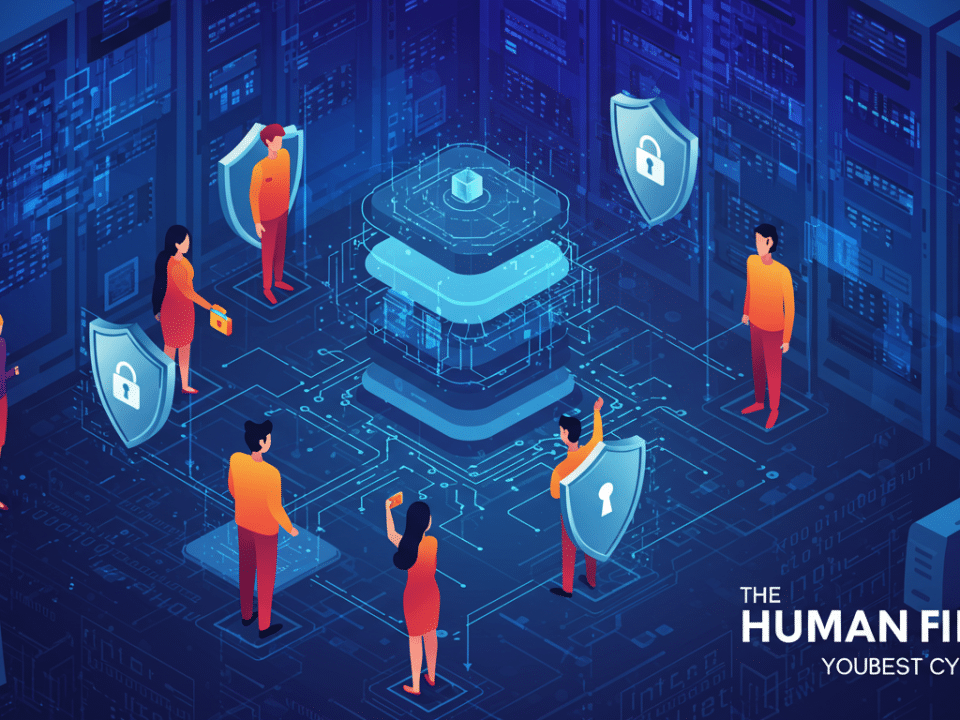
Deceptive iMessage Phishing Scam: A New Tactic to Bypass Apple Security
January 14, 2025
NSA Warning on Location Tracking: A Call for Heightened Mobile Security Awareness
January 16, 2025In today’s interconnected world, cybersecurity is no longer just a technical issue – it’s a legal and regulatory imperative. Cybersecurity compliance refers to adhering to laws, regulations, standards, and frameworks that govern the protection of sensitive data and systems. Failing to comply can result in hefty fines, legal battles, reputational damage, and a loss of customer trust.
As your trusted cybersecurity partner, Krypto IT is committed to helping you understand and navigate the complexities of cybersecurity compliance. This blog post will provide a comprehensive overview of what compliance entails, explore key frameworks and regulations, and outline best practices for achieving and maintaining compliance.
Why is Cybersecurity Compliance Important?
Cybersecurity compliance is not just about avoiding penalties; it’s about building a strong security foundation and demonstrating a commitment to protecting sensitive information. Key benefits of compliance include:
- Reduced Risk of Data Breaches: Compliance frameworks often mandate security controls that help mitigate the risk of data breaches and cyberattacks.
- Enhanced Data Protection: Compliance ensures that sensitive data is handled and protected according to established standards.
- Legal and Regulatory Adherence: Helps organizations avoid fines, penalties, and legal action associated with non-compliance.
- Improved Customer Trust: Demonstrates a commitment to security and privacy, fostering trust among customers and partners.
- Stronger Security Posture: The process of achieving compliance often leads to a more robust and resilient security posture.
- Competitive Advantage: Compliance can be a competitive differentiator, especially in industries that handle sensitive data.
Key Cybersecurity Compliance Frameworks and Regulations
The specific compliance requirements that apply to an organization depend on its industry, location, the type of data it handles, and other factors. Here are some of the most common frameworks and regulations:
- General Data Protection Regulation (GDPR): A comprehensive European Union (EU) regulation that governs the collection, use, and protection of personal data of EU residents.
- California Consumer Privacy Act (CCPA): A California law that grants consumers certain rights regarding their personal information held by businesses.
- Payment Card Industry Data Security Standard (PCI DSS): A set of security standards for organizations that handle credit card information.
- Health Insurance Portability and Accountability Act (HIPAA): A U.S. law that sets standards for protecting sensitive patient health information.
- Sarbanes-Oxley Act (SOX): A U.S. law that requires publicly traded companies to implement internal controls over financial reporting, including IT security controls.
- NIST Cybersecurity Framework: A voluntary framework developed by the National Institute of Standards and Technology (NIST) that provides a set of guidelines for managing cybersecurity risk.
- ISO 27001: An international standard that specifies requirements for establishing, implementing, maintaining, and continually improving an information security management1 system (ISMS).
- SOC 2 (Service Organization Control 2): An auditing procedure that ensures service providers securely manage data to protect the interests and privacy of their2 clients.
Best Practices for Achieving and Maintaining Cybersecurity Compliance
1. Understand Your Compliance Obligations:
- Identify Applicable Regulations: Determine which laws, regulations, and standards apply to your organization based on your industry, location, and the type of data you handle.
- Conduct a Compliance Gap Analysis: Compare your current security practices against the requirements of the relevant frameworks to identify areas where you need to improve.
2. Develop and Implement Policies and Procedures:
- Information Security Policy: A high-level document that outlines your organization’s overall approach to information security.
- Data Classification Policy: Define different levels of data sensitivity and specify appropriate handling procedures for each level.
- Acceptable Use Policy: Outline acceptable use of company IT resources and data.
- Incident Response Plan: Detail procedures for responding to security incidents, including data breaches.
- Password Policy: Establish strong password requirements and guidelines (see detailed section below).
- Data Retention and Disposal Policy: Define how long different types of data should be retained and how it should be securely disposed of when no longer needed.
3. Implement Security Controls:
- Access Control: Implement the principle of least privilege and use multi-factor authentication (MFA).
- Data Encryption: Encrypt sensitive data both in transit and at rest.
- Network Security: Deploy firewalls, intrusion detection/prevention systems, and other network security controls.
- Endpoint Security: Protect all devices that access your network with antivirus, anti-malware, and other endpoint security solutions.
- Vulnerability Management: Regularly scan for and remediate vulnerabilities in your systems and applications.
4. Conduct Regular Security Assessments and Audits:
- Vulnerability Assessments: Identify weaknesses in your IT infrastructure.
- Penetration Testing: Simulate real-world attacks to test the effectiveness of your security controls.
- Security Audits: Engage independent auditors to assess your compliance with relevant standards and regulations.
5. Provide Security Awareness Training:
- Educate Employees: Train employees on their security responsibilities, including how to recognize and report phishing attempts, handle sensitive data securely, and comply with security policies.
- Regular Training: Conduct regular training sessions to keep employees up-to-date on the latest threats and best practices.
6. Monitor and Review:
- Security Monitoring: Continuously monitor your systems and networks for suspicious activity.
- Log Analysis: Regularly review security logs to identify potential security incidents.
- Compliance Reviews: Periodically review your compliance posture and update your policies and procedures as needed.
Password Policy Best Practices:
A strong password policy is a critical component of cybersecurity compliance. Here are key elements to include:
- Password Complexity:
- Enforce minimum length requirements (at least 12 characters, preferably longer).
- Require a mix of uppercase and lowercase letters, numbers, and symbols.
- Disallow common words or easily guessable information.
- Password Expiration:
- Consider requiring password changes at regular intervals (e.g., every 90-180 days) or base it on suspected compromises.
- Prevent the reuse of old passwords.
- Account Lockout:
- Implement account lockout after a certain number of failed login attempts (e.g., 3-5 attempts).
- Multi-Factor Authentication (MFA):
- Mandate MFA for all users, especially for those with access to sensitive data or systems.
- Password Storage:
- Never store passwords in plain text.
- Use strong, salted hashing algorithms to store passwords securely.
- Employee Training:
- Educate employees on creating strong passwords and the importance of not reusing passwords across different services.
- Encourage or mandate the use of password managers.
Krypto IT: Your Partner in Cybersecurity Compliance
Navigating the complex landscape of cybersecurity compliance can be challenging. Krypto IT can help you understand your obligations, implement appropriate controls, and maintain compliance with relevant regulations and standards.
Our services include: compliance assessments, policy development, security awareness training, vulnerability management, penetration testing, and incident response planning. We can tailor a solution to your specific needs and industry requirements, helping you build a robust and compliant security program.
Contact us today for a free consultation and let us help you achieve your cybersecurity compliance goals.
Don’t let compliance be an afterthought. Be proactive. Be secure. Partner with Krypto IT.
#Cybersecurity #Compliance #GDPR #CCPA #PCIDSS #HIPAA #SOX #NIST #ISO27001 #InfoSec #DataSecurity #DataProtection #RiskManagement #SecurityBestPractices #KryptoIT #CyberDefense #PasswordSecurity




